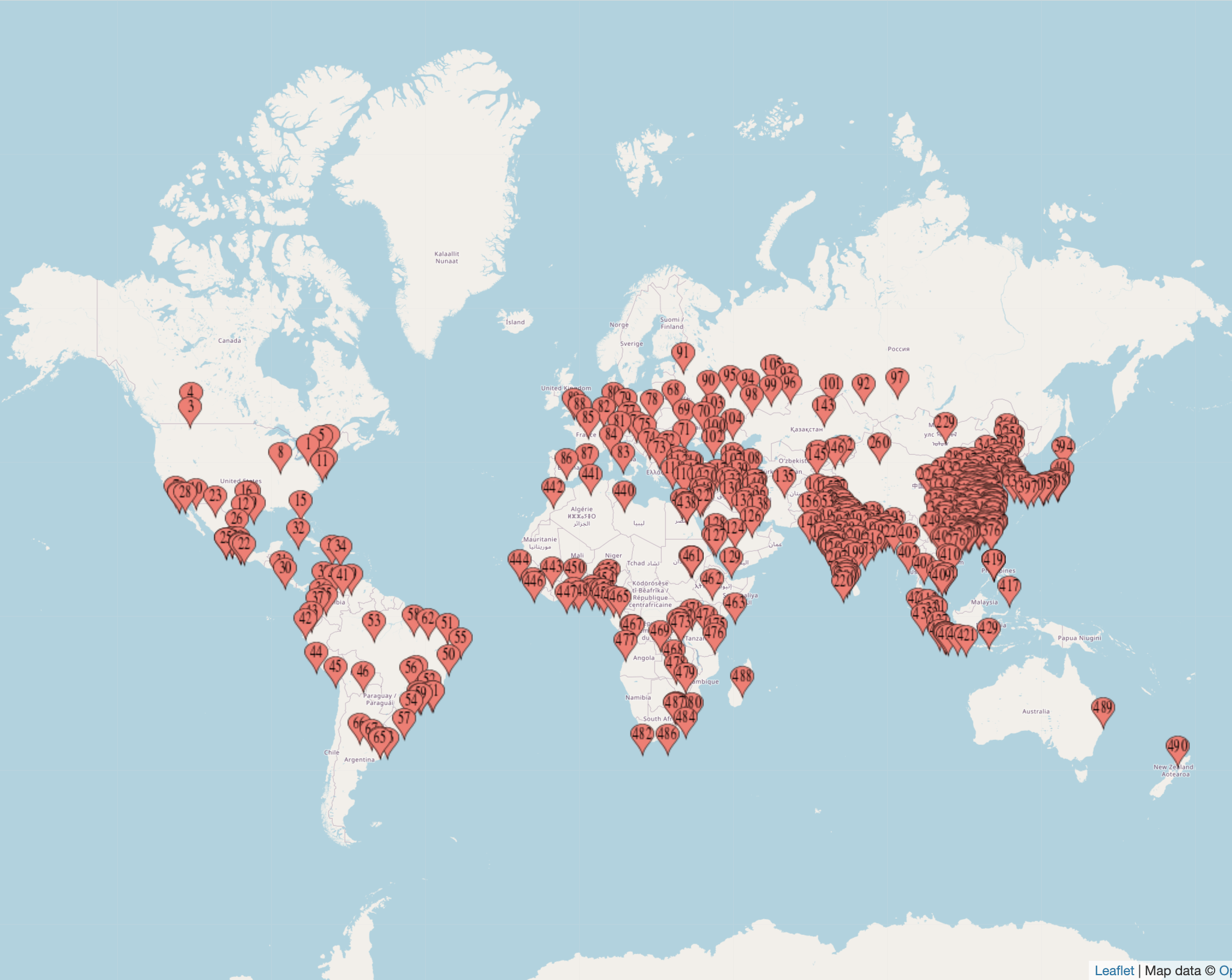World Cities Population Over One Million Map


David Chen
Data Visualization Specialist
David Chen is an expert in transforming complex geographic datasets into compelling visual narratives. He combines his background in computer science ...
Geographic Analysis
What This Map Shows
The map titled "Every City in the World with a Population Over a Million City Proper 2025" is a comprehensive visualization showcasing the urban centers around the globe that have a population exceeding one million within their city proper boundaries. This data-rich representation includes a total of 490 cities, providing a clear and detailed overview of urban population distribution worldwide. Each dot on the map signifies a city, allowing viewers to zoom in and explore the geographical context of these densely populated areas.
Deep Dive into Urban Population Dynamics
Urbanization has been a defining trend of the 21st century, with cities becoming the focal points of economic, social, and cultural activities. The sheer number of cities on this map—490—illustrates the global shift towards urban living. As of 2025, it's fascinating to see how these cities not only serve as homes for millions but also as engines of growth and innovation.
The demographic patterns reflected on the map are influenced by various factors, such as migration, economic opportunities, and environmental conditions. For instance, cities like Tokyo, Delhi, and Shanghai are not just populous; they are also pivotal to global economics, contributing significantly to GDP and employment. As of 2025, Tokyo remains the largest city in the world, with a staggering population exceeding 37 million in its metropolitan area, while Delhi and Shanghai are not far behind, showcasing rapid growth rates fueled by rural-to-urban migration and expansive urban development projects.
Interestingly, cities in developing countries are often growing at a much faster pace than their counterparts in developed nations. This rapid urbanization can lead to challenges such as overcrowding, inadequate infrastructure, and environmental degradation. For example, cities like Dhaka and Kinshasa have witnessed explosive population growth, leading to severe traffic congestion, strained public services, and pressing housing shortages.
Moreover, this map highlights the importance of urban planning and sustainable development. Urban planners and policymakers are increasingly focusing on creating livable cities that can accommodate growing populations while minimizing environmental impact. This involves not only expanding housing and transportation infrastructure but also ensuring access to green spaces and public services.
Regional Analysis
When examining the map regionally, distinct patterns emerge that reflect economic disparities, cultural factors, and historical contexts. For instance, North America is home to several populous cities such as New York City, Los Angeles, and Chicago; however, the growth trends here differ significantly from those in Asia and Africa. While North American cities are stabilizing or even seeing slight declines in growth, cities in Asia, particularly in India and China, continue to expand rapidly.
In Europe, cities like London, Paris, and Berlin maintain substantial populations; however, many European cities face demographic challenges such as aging populations and declining birth rates. This contrasts sharply with cities in Africa, where youthful demographics lead to higher growth rates. For instance, cities like Lagos and Nairobi are not only growing in population but are also becoming increasingly influential on the global stage.
Looking at Latin America, cities such as São Paulo and Mexico City are significant players, but they also contend with issues related to inequality and urban sprawl. Each region presents its own unique challenges and opportunities, making the data on this map invaluable for understanding urban dynamics globally.
Significance and Impact
The implications of urban growth are profound. Understanding where populations are concentrating helps governments, businesses, and non-profits make informed decisions about resource allocation, infrastructure development, and social services. As cities continue to grow, the demand for housing, transportation, and sustainability solutions will intensify.
Moreover, this map serves as a valuable resource for researchers and policymakers alike. The data can inform strategies for disaster preparedness, climate resilience, and public health initiatives, particularly in populous areas prone to natural disasters or pandemics. As we look ahead, the trends observed in this map will likely shape global policies and initiatives aimed at creating sustainable urban environments.
In conclusion, the "Every City in the World with a Population Over a Million City Proper 2025" map is more than just a collection of data points—it is a reflection of our world in transition. The insights gained from analyzing urban populations provide critical context for understanding the challenges and opportunities that lie ahead in our increasingly urbanized future.
Visualization Details
- Published
- October 6, 2025
- Views
- 50
Comments
Loading comments...